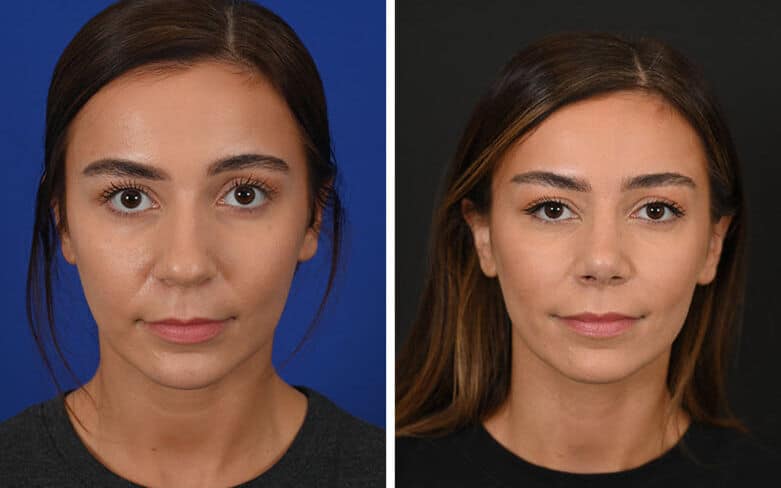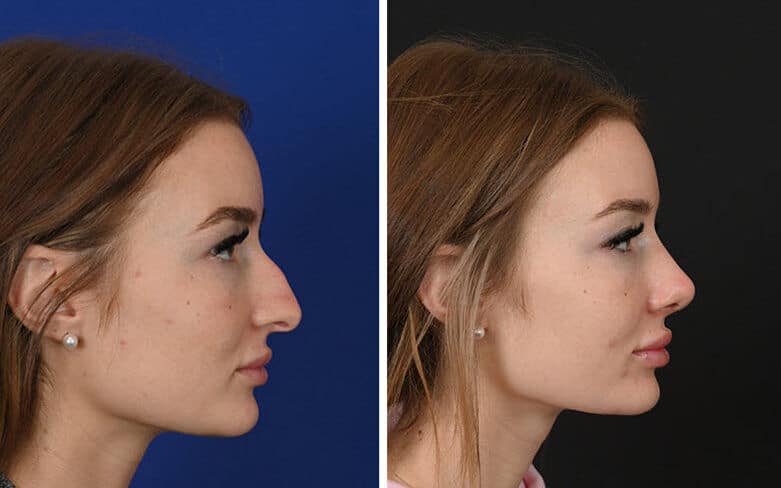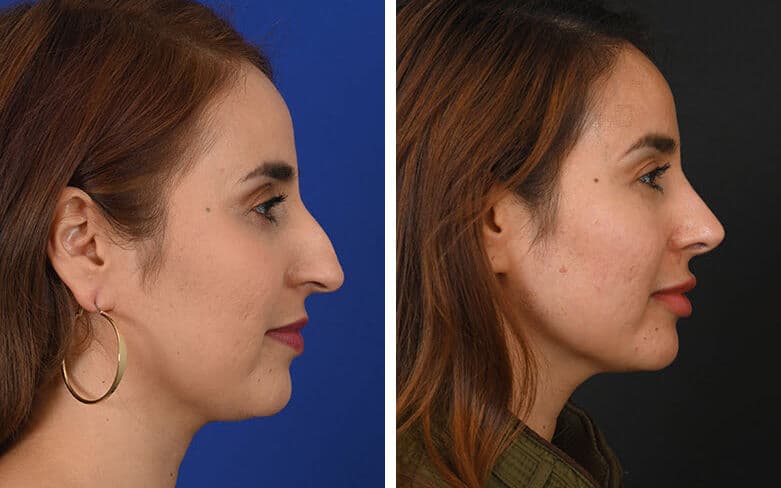Ultrasonic Rhinoplasty (Piezo Rhinoplasty)
Premier Houston Rhinoplasty Surgeon Dr. Michel Siegel
An ultrasonic (or Piezo/Piezoelectric) rhinoplasty is a newer way to perform a nose surgery with even more precision and gentleness. This technique allows a surgeon to reshape certain bones in the nose without the need to cut or break.
Houston rhinoplasty surgeon Dr. Michel Siegel, who is known for a gentle touch and for natural-looking results, performs ultrasonic rhinoplasty (in addition to traditional rhinoplasty). The ultrasonic surgical technique can also be combined with the preservation rhinoplasty technique – a favorite of Dr. Siegel and his patients.
Consider an ultrasonic rhinoplasty if you are especially interested in no breaking of bone, minimal pain, no bruising, a short recovery time, and a perfectly reshaped nose that doesn’t look like it ever had surgery. The recovery is easy; check out our page on ultrasonic rhinoplasty aftercare instructions.
Contact our office in Houston to book a consultation – in-office or over Zoom – or check out photos of our ultrasonic rhinoplasty patients, or read on to find out more about ultrasonic (AKA Piezo) rhinoplasty.
Kinsley Johnson
Leslie Baker
Dr. Susan Vargas
What is ultrasonic rhinoplasty?
Ultrasonic rhinoplasty, also known as Piezo rhinoplasty, uses ultrasound vibrations to shape bones in the nose during rhinoplasty. By contrast, traditional rhinoplasty relies on chisels and files to cut away bone. Ultrasonic rhinoplasty avoids cutting in that way, instead using gentle vibrations to re-contour the bones. This provides a more-precise result, and it avoids the bruising and swelling common in traditional rhinoplasty.
What are the benefits of an ultrasonic rhinoplasty?
Rhinoplasty has been around for over 100 years, but the instruments – like scalpels and surgical chisels and rasps – have not changed much, until recently.
Ultrasonic rhinoplasty involves the use of tiny instruments, each with a different shape and function, like attachments on a vacuum. These instruments reshape the bones by creating vibrations, through ultrasound technology.
This allows for gentler, more precise shaping and the ability to polish bones more incrementally. The greater precision also causes even less swelling and bruising than many traditional rhinoplasties do.
Is the recovery time shorter after an ultrasonic rhinoplasty?
Ultrasonic rhinoplasty only affects bones, and does not disrupt the soft tissues of the nose, where the blood vessels are located. Disruption of these structures during traditional rhinoplasty is what causes bruising and swelling. Because ultrasonic rhinoplasty does not cause injury to blood vessels, swelling and bruising is greatly reduced.
Do most nose surgeons perform ultrasonic rhinoplasty?
Ultrasonic rhinoplasty has become the new standard for rhinoplasty in Europe where it was developed, and in surgically advanced countries like Turkey. But surgeons in the US have been slow to adopt this new technique. Dr. Siegel was the first facial surgeon in Houston to offer ultrasonic rhinoplasty to his patients, and (as of this writing) is still one of very few surgeons in the area using the ultrasonic technique in every rhinoplasty.
When is ultrasonic rhinoplasty performed?
Ultrasonic rhinoplasty applies only to the bony part(s) of the nose. It is designed to correct a hump, a nose that is too wide or too strong, a deviated nasal septum, or a bony asymmetry. The soft tissues of the nose will require traditional surgical shaping.
Ultrasonic rhinoplasty is currently used on five continents, and many of the best rhinoplasty surgeons have also adopted this newer bone-reshaping techniques, for both cosmetic and functional rhinoplasty. The ultrasonic technique was developed in France around 2016, and it has been practiced in the US and elsewhere more recently, though by relatively few facial surgeons.
Is ultrasonic rhinoplasty a good choice for every patient?
The nose is composed of bone and cartilage. Because ultrasonic rhinoplasty only operates on the bony portion of the nose, every rhinoplasty patient who requires bone modification during surgery is a candidate for ultrasonic rhinoplasty.
Ultrasonic Rhinoplasty (Piezo Rhinoplasty) Before & After




Why choose Dr. Michel Siegel for your rhinoplasty?
The success of your nose surgery depends above all on the nose surgeon you pick.
Rhinoplasty is not just another procedure offered by Dr. Siegel: It is his main focus. Dr. Siegel is a nose surgery specialist. He is double board certified by the only two boards certifying nose specialists (abohns.org and abfprs.org. Those certifications and his 20+ years of rhinoplasty experience, allow him to perform revision rhinoplasty to correct flaws in primary, secondary, and tertiary rhinoplasties.
More developments in rhinoplasty surgery have occurred in the last 15 years than in the previous 100. Your surgeon should be skilled in the best new techniques in nose surgery.
Dr. Siegel is one of the first surgeons in Texas and the country to be trained in Turkey, Europe, and Latin America in advanced surgical techniques for nose surgery. These techniques include ultrasonic rhinoplasty, which avoids breaking the bones as in traditional rhinoplasty, and preservation rhinoplasty, where the shape of the nose is changed by "preserving" the supportive structures of the nose with minimal bone and cartilage removal. This leads to faster healing and natural long-term outcomes in a shorter period.
Rhinoplasty is more than just a surgical procedure. It is a series of personal decisions, followed by a series of medical and aesthetic decisions. Dr. Siegel will work with you every step of the way. You will not be handed off to an assistant or a junior associate. We remain a small boutique practice providing not only exceptional surgical results and personalized care.
Find out even more about why to choose Dr. Siegel, or contact us to discuss your perfect look.

